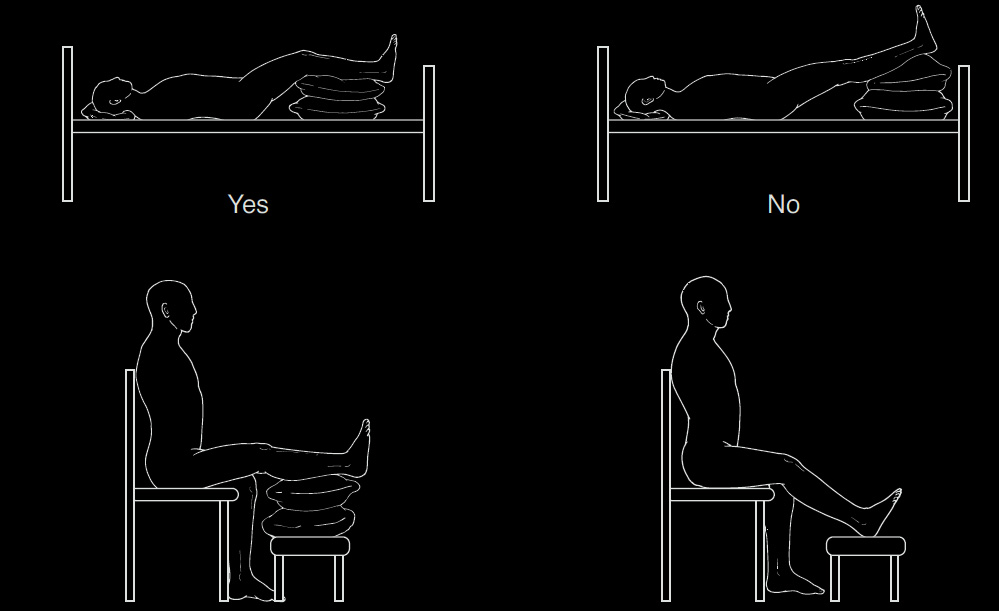ACUTE INFLAMMATION
What Is Acute Inflammation?
Inflammation is the body’s normal protective response to an injury, irritation, or surgery. This natural “defense” process brings increased blood flow to the area, resulting in an accumulation of fluid. As the body mounts this protective response, the symptoms of inflammation develop. These include:
- Swelling
- Pain
- Increased warmth and redness of the skin
Inflammation can be acute or chronic. When it is acute, it occurs as an immediate response to trauma (an injury or surgery)—usually within two hours. When it is chronic, the inflammation reflects an ongoing response to a longer-term medical condition, such as arthritis.
Inflammation is not the same as infection. Infections are caused by bacteria, fungus, and viruses, and infections sometimes produce inflammation. However, infection and inflammation are treated very differently. Your foot and ankle surgeon can best determine the cause of your inflamed tissue.
Treatment
To reduce inflammation and the resulting swelling and pain, injured tissue needs to be properly treated.The earlier you start treatment, the better.
Treatment for acute inflammation consists of “R.I.C.E.” therapy— which stands for Rest, Ice, Compression, and Elevation. For acute inflammation in the foot or ankle, your foot and ankle surgeon will recommend the following:
- Rest. Stay off of your foot as much as possible to prevent further injury. In some cases, complete immobilization may be required. Your doctor will decide whether you will need crutches and whether movement of your foot or ankle is appropriate.
- Ice. Icing, which decreases blood flow to the tissue, thus reducing swelling and pain, should be continued until your symptoms resolve.Wrap ice cubes—or a bag of frozen peas or corn—in a thin towel and place the pack on the injured area for 20 minutes of each hour you’re awake. If your skin turns blue or white, discontinue icing for a few hours.Two cautions: Never apply ice or frozen bags directly to your skin. And never leave an ice pack on your injury while you sleep.
- Compression. Keep the inflamed area compressed by wrapping it in an elastic bandage or stocking. Compression prevents additional fluid accumulation and helps reduce pain.Wrap the bandage more firmly at the toes and less firmly at the calf. If your toes tingle or your foot throbs, the wrapping may need to be loosened. If the tingling or throbbing continues after loosening the wrap, contact your doctor as soon as possible.
- Elevation. Keeping the foot elevated reduces the swelling by allowing excess fluid to drain to the heart. The proper way to elevate your foot is to keep it level with or slightly above the heart. Place one or two pillows under your calf, and make sure your hip and knee are slightly bent. Never
keep your leg extended straight out.
In addition to the above measures, your foot and ankle surgeon may prescribe a non-steroidal anti-inflammatory drug (NSAID), such as ibuprofen, or another type of medication.
Elevate the Leg Properly

If Pain Persists or Becomes Worse
The symptoms of inflammation typically improve within two or three days. If your pain and discomfort do not improve after three days, call your doctor or go to an emergency room to determine whether a more serious problem exists.
As with any medical problem, it’s important that you follow your doctor’s instructions carefully regarding your injury or postoperative care.

This information has been prepared by the Consumer Education Committee of the American College of Foot and Ankle Surgeons, a professional society of 5,800 foot and ankle surgeons.Members of the College are Doctors of Podiatric Medicine who have received additional training through surgical residency programs.
The mission of the College is to promote superior care of foot and ankle surgical patients through education, research and the promotion of the highest professional standards.
Copyright © 2005,American College of Foot and Ankle Surgeons • www.FootPhysicians.com
Contact Us
Office Hours:
Monday - Friday
8:00AM - 5:00PM
Tucson Foot & Ankle Institute:
7406 N. La Cholla Blvd.
Tucson, AZ 85741
Phone: (520) 545-0202
Fax: (520) 545-0201
© Tucson Foot and Ankle Institute. All Rights Reserved. | Privacy Policy

